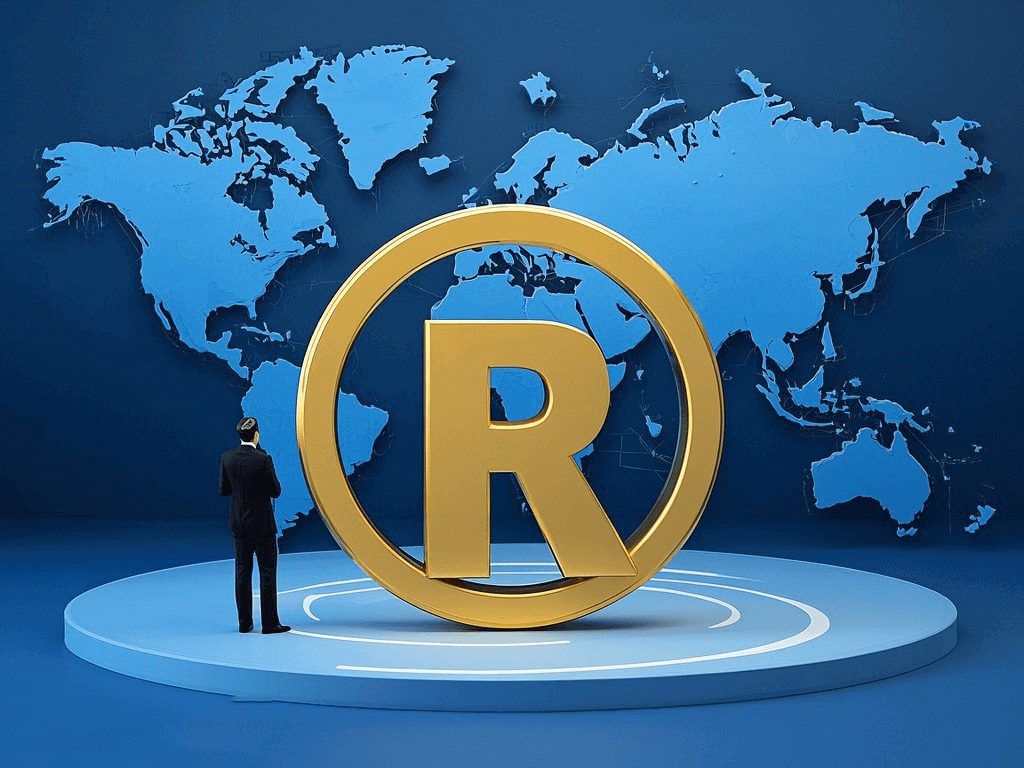International Trademark Protection: The Tug-of-War Between Territorial Barriers and Global Harmonization
 As the global commercial landscape rapidly converges, businesses venturing beyond their home markets often encounter a perplexing reality: a trademark right secured at great expense in the United States may become a meaningless symbol in the French market. Behind this apparent contradiction lies the fundamental logic of intellectual property protection in modern commercial civilization. Since the 1883 Paris Convention established the principle of territorial protection, international trademark systems have continually sought a balance between the ideal of global unification and the reality of territorial sovereignty — a dynamic still playing out within the framework of the Madrid System, now covering 128 countries and regions.
As the global commercial landscape rapidly converges, businesses venturing beyond their home markets often encounter a perplexing reality: a trademark right secured at great expense in the United States may become a meaningless symbol in the French market. Behind this apparent contradiction lies the fundamental logic of intellectual property protection in modern commercial civilization. Since the 1883 Paris Convention established the principle of territorial protection, international trademark systems have continually sought a balance between the ideal of global unification and the reality of territorial sovereignty — a dynamic still playing out within the framework of the Madrid System, now covering 128 countries and regions.
1. The Institutional Code Behind Territorial Protection
Trademark rights are fundamentally born from the concession of national sovereignty — every sovereign state retains ultimate authority over commercial identifiers within its borders. For example, the United States Patent and Trademark Office (USPTO) operates on a "first-to-use" basis, allowing unregistered trademarks to gain protection through actual commercial use. In contrast, China enforces a strict "first-to-file" system. This divergence has led to long-running disputes like the 20-year battle over the "MUJI" trademark between Chinese and Japanese entities.
Even within regional blocs, territorial rigidity persists. Although the European Union established a unified trademark registration system, Brexit immediately rendered 45,000 EU trademarks invalid in the UK, underscoring the unyielding nature of territorial protection.
Differences in legal traditions create inherent barriers in trademark examination processes. Islamic countries prohibit the registration of alcohol-related trademarks, India restricts the commercialization of religious symbols, while Canada requires foreign-language trademarks to include a French translation. These localized regulations force companies like Disney to culturally adapt characters such as Mickey Mouse for trademark registration in Saudi Arabia. Disparities in substantive standards also create friction: Chinese courts ruled that the "Jordan" trademark infringed on personal name rights, while U.S. courts reached the opposite conclusion.
2. The Practical Dilemma of Global Harmonization
While the World Intellectual Property Organization (WIPO) has constructed a procedural framework through the Madrid System, it essentially simplifies the application process rather than creating a true “international trademark.” Trademark rights are still contingent on substantive examination by each designated country. For instance, when Huawei filed applications via the Madrid System in ten countries, it remained subject to varying national reviews — Mexico could reject "HUAWEI" due to potential slang associations, and Australia might request additional proof of use.
Beyond legal systems, linguistic and cultural diversity presents a deeper obstacle. Lenovo’s predecessor, "Legend," was preemptively registered in 20 European countries, forcing a costly global rebranding. Toyota’s "Pajero" model had to be renamed "Montero" in parts of South America due to offensive slang connotations in Spanish. These cases highlight that trademarks serve not only as legal identifiers but also as cultural carriers, making full international protection elusive across language and cultural divides.
3. A Path Forward: Gradual Institutional Evolution
Regional unification initiatives offer feasible prototypes. The African Intellectual Property Organization (OAPI) enables “one application, multiple-country enforcement” across 17 Francophone nations. Meanwhile, the ASEAN Trademark System is developing shared examination standards. These regional successes demonstrate that where cultural affinity and economic integration exist, trademark protection harmonization is attainable. Notably, within the European Union, legal coordination has enhanced cross-border enforcement efficiency by 40% over the past five years.
At the same time, digital technology is reshaping protection models. Blockchain-based evidence systems improve cross-border recognition of prior use claims, while AI-driven trademark monitoring platforms can track trademark status in 184 countries simultaneously. WIPO’s Global Brand Database now contains over 50 million trademark records, and advances in machine translation have boosted cross-language search accuracy to 92%. These innovations are providing crucial technical support in overcoming territorial barriers.
Standing at the threshold of a new globalization era, international trademark protection is undergoing profound transformation. Although a fully unified “world trademark” remains a distant ideal, the Madrid System’s expansion from 56 to 128 members since 1996 signals accelerating institutional integration. In the future, a "core-standard unification + culturally sensitive exceptions" hybrid model may emerge, preserving regional cultural identities while gradually dismantling unnecessary systemic barriers. Achieving this dynamic balance will not only reduce the operational costs of cross-border business but also serve as a litmus test for the deep integration of global commercial civilization.
Share this page
